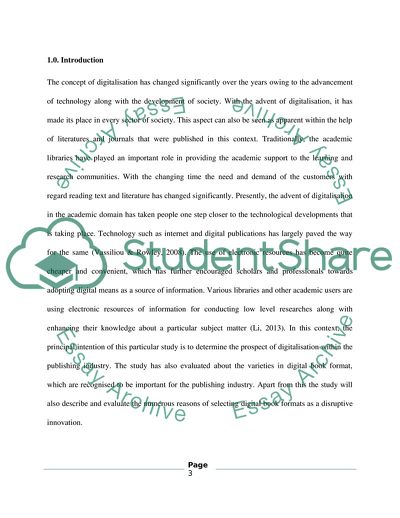How Digital Book Formats Has Been Used In the Publishing Industry Term Paper Example | Topics and Well Written Essays - 2250 words. https://studentshare.org/literature/1865094-research-how-digital-book-formats-has-been-used-in-the-publishing-industry
How Digital Book Formats Has Been Used In the Publishing Industry Term Paper Example | Topics and Well Written Essays - 2250 Words. https://studentshare.org/literature/1865094-research-how-digital-book-formats-has-been-used-in-the-publishing-industry.


